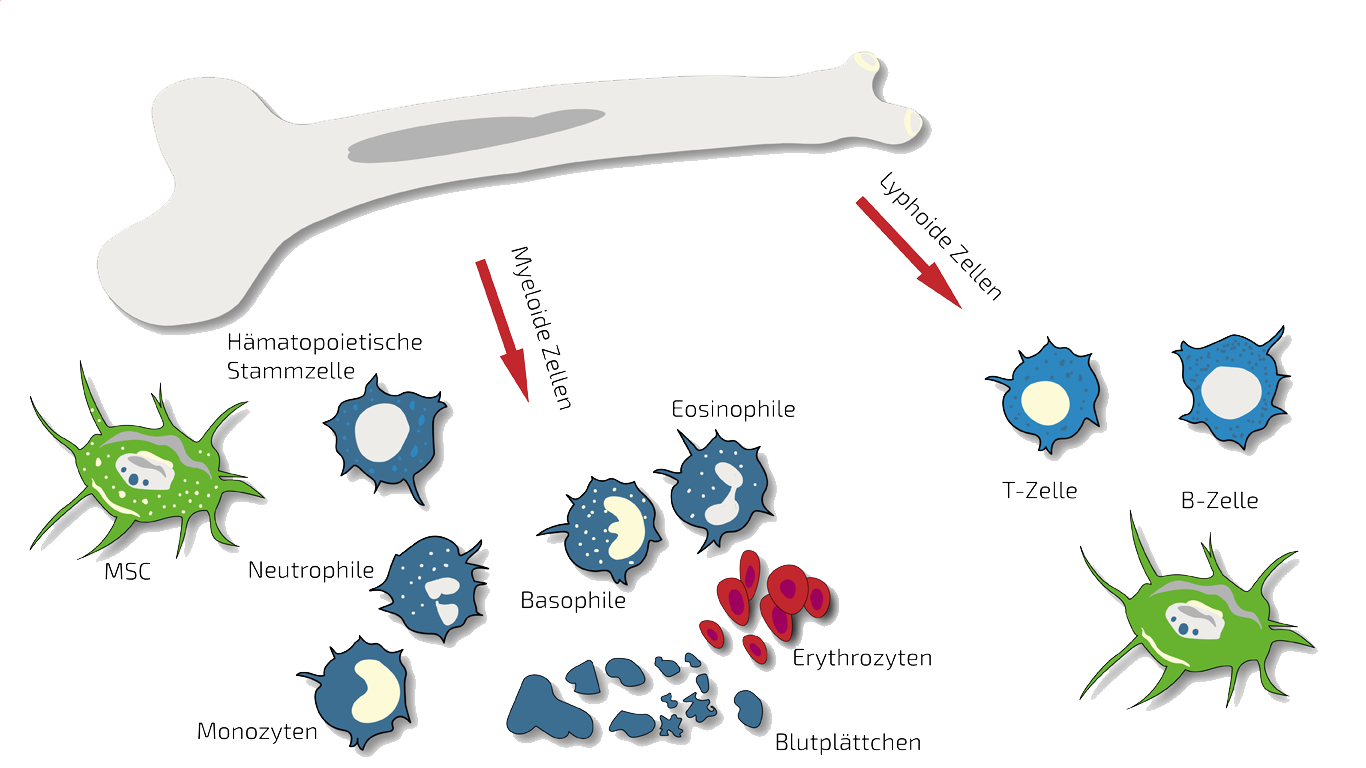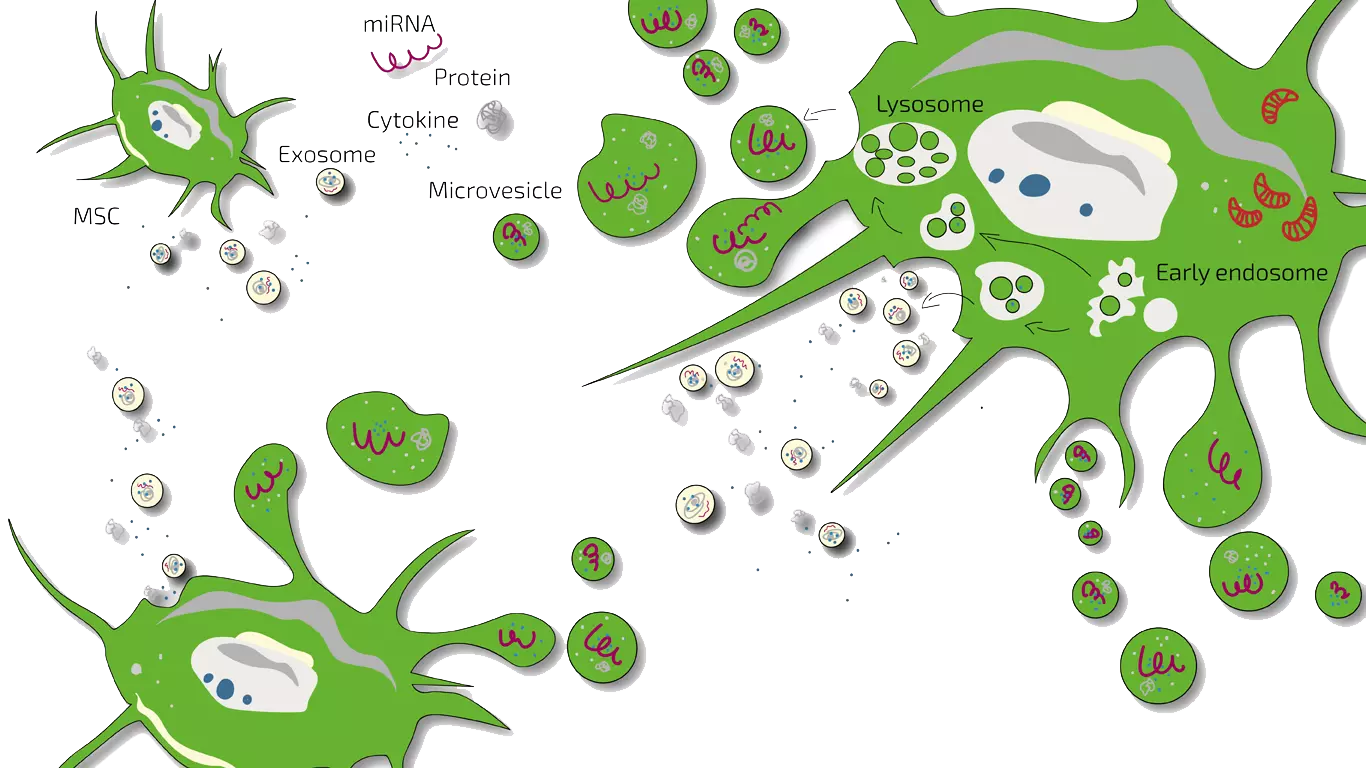Stem Cell-based Therapies for Rheumatoid Arthritis - RA:
More Than Just Another Symptom Treating Medicine
Rheumatoid Arthritis (RA) and Juvenile Idiopathic Arthritis are chronic inflammatory autoimmune diseases that attack the body's own tissues. Most frequently they start by affecting the joints.
Several medications exist in the world that offer temporary pain relief or slightly alter the progression of Rheumatoid Arthritis (RA). As with most medications, they have many side effects and offer no real cure for RA.
Stem Cell-based therapies for Rheumatoid Arthritis are a new paradigm in the repertoire for treating RA, and can offer more than just a simple reduction of the associated pain (i.e. reduction of inflammation). Stem Cell-based therapies have generally been shown to down-regulate the inflammation, alter immune responses and stimulate increased regeneration for longer periods of time, thus bringing regenerative medicine much closer than ever before to finding a viable treatment for RA.
At ANOVA's German Stem Cell Clinic, we offer novel programs for the treatment of Rheumatoid Arthritis.
Rheumatoid Arthritis - Diagnostics - Treatment - Stem cells - Medication
On this page we inform you about Rheumatoid Arthritis covering an overview on important aspects of causes, treatment options, precision diagnostics that reveals the cause of pain and location of the pain-causing defect, as well as our stem cell-based therapies that we offer in Offenbach (near Frankfurt/Main) Germany.
Jump directly to the following topics:
- Conventional therapies
- ANOVA therapies for RA
- Expectations and limits
- Avoid joint replacement
- Our rheumatoid arthritis treatment
- Workflow of the treatment process
- Diagnostics of pain-causing defects
- The ANOVA difference: targeted treatment
- You want a second opinion
- Other important therapeutic possibilities
- FAQ- frequently-asked questions
- Sources and Literature

Joint and cartilage degeneration in RA
ANOVA IRM - Germany
Generally Available Conventional Therapies
In addition to Non-steroidal Anti-Inflammatory Drugs (NSAIDs) for treating rheuma, new types of medication classified as Disease-Modifying Anti-rheumatic Drugs (DMARDs) were shown to significantly reduce symptoms. The latest generation of DMARDs are known as biological and immunological DMARDs. They are designed to specifically target and alter the immune system pathways that RA affects.
However, more than 50% of the patients have to discontinue their use after 2 years due to declining efficacy or adverse side effects. In any case, RA is a severe disease that often leads to disabilities and life span reduction with no known cure.
Synthetic hyaluronic acid (HA), whose natural form is part of the synovial fluid, has been used for decades to aid the viscosity of the joint and suppress inflammation. While previous meta-analyses considered HA superior to cortisone injections, this effect could not be addressed in a recent large-scale meta-analysis (viii). Therefore, while medication may help relief the symptoms, they may cause severe side effects that can still heavily impact the quality of life of the patients.
Stem Cell Treatments for Rheumatoid Arthritis - OA at
ANOVA Institute for Regenerative Medicine - Offenbach, Germany
BMC, Secretome/Exosomes, PRP, HA
Potency Hypothesis of Stem Cell Therapies
Stem cells possess the potential to communicate with the immune cells that elicit the inflammation and by natural, so far not understood mechanisms may inhibit this immune-over-reaction. Furthermore, stem cells have the ability to stimulate regeneration of tissue thereby counteracting the wear and loss of cartilage in the affected joints. Negative long-term effects similar to cortisone are not expected. The aim of a stem cell treatment is therefore, the fast relief of pain, the slowing of the disease progression and in the best cases to even support joint regeneration. This can dramatically increase the quality of life, especially for patients with severe pain, as well as the movement duration and range.
Is it Possible to Relief Pain and Avoid Joint Replacement?
Yes, there are different innovative (experimental) treatment concepts which specifically target cartilage defects with stem cell therapies and help to avoid joint replacement also in the long term. A surgical joint replacement requires long-lasting rehabilitation and often offers only moderate treatment success. Patients often re-acquire their strength and mobility after months but fail to improve their level of activity. Additionally joint implants have to be replaced regularly which results in several surgical interferences over the years for younger patients.
A specific, well-tailored stem cell therapy in contrast could postpone the surgical procedure and might even help to avoid joint replacement. For this, autologous (patient's own) stem cells are used to halt inflammation and initiate the body's own regeneration and repair system. New evidence-based external scientific and clinical studies have shown that stem cell-based therapies are able to modulate immune responses in RA and to stimulate regenerative processes in osteoarthritis by e.g. stimulation of chondrocyte replacement (the cells that produce cartilage).
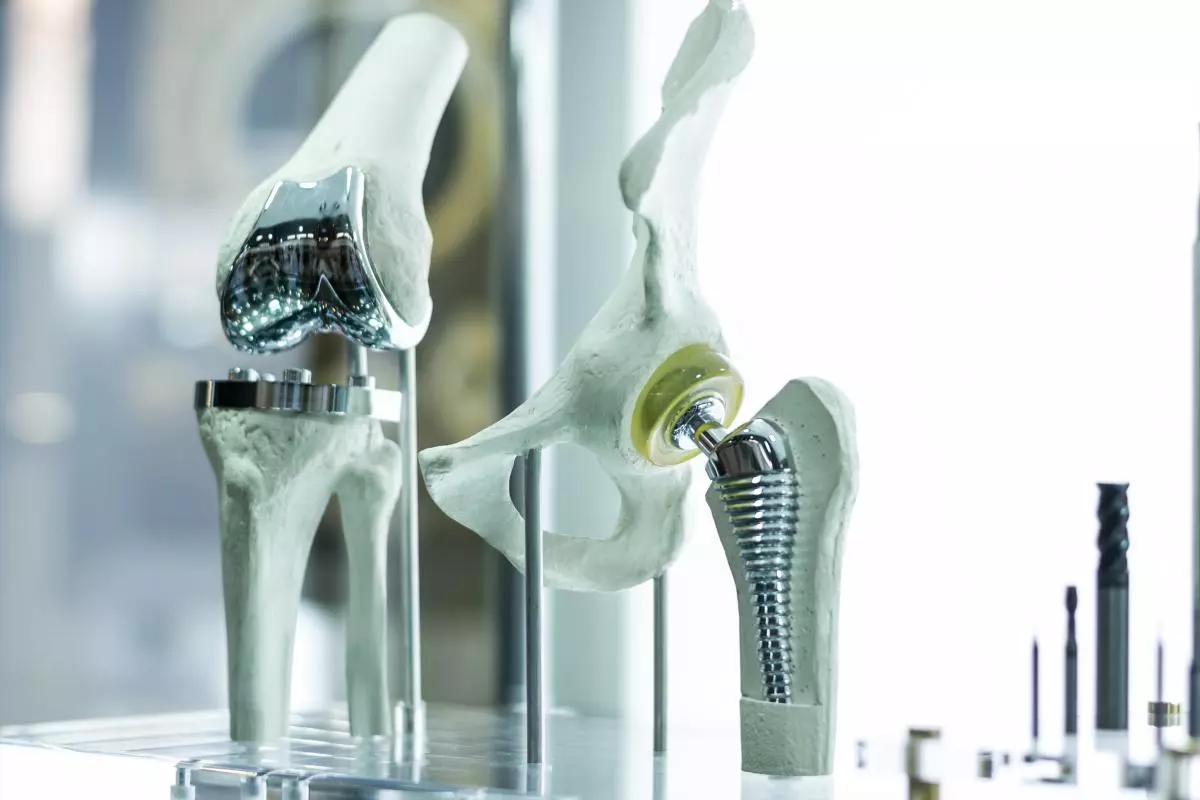
Avoid joint replacement surgery
ANOVA IRM - Germany
Two Targeted Effects: Pain Relief and Progression Improvement
A stem cell treatment can elicit two effects in affected joints that build on one another. Due to the modulation of the underlying immune reaction the stem cell injection decreases or even stops the inflammation. As inflammation, especially in early stages, often is the main cause of pain, targeted stem cell injection often results in immediate pain relief up to complete pain-free movements of the treated joint.
The effects on disease progression builds on the inhibition of inflammation. Upon the halting of the inflammation the joint returns to a resting-phase and cartilage loss is reduced or stops. With adequate on-going therapy in combination with e.g. physiotherapy, regeneration of cartilage and formation of new cartilage can take place. As all effects are patient- and disease stage-dependent and may be influenced by additional, external factors, we always apply individual treatment plans. In general, pain is relieved, inflammation is reduced, further degradation and wear of the joints is slowed up to cartilage re-building.
BMC - Bone Marrow Concentrate - Autologous
Autologous (self) BMC are our main therapy option for locally-restricted RA joint damage especially when e.g. only the hands or toes are affected.
In such cases we treat specifically this joint or these joints with targeted, localized BMC injections. BMC contains autologous meaning patients own, adult stem cells (hematopoietic and mesenchymal stem cells in natural composition) which we isolate and concentrate from your pelvis crest in a short process under slight sedation.
These stem cells are supposed to inhibit the inflammation thereby relieving you from pain and to stimulate regeneration of the joint cartilage. For an on-going therapy, we combine BMC with PRP (platelet-rich plasma) or Hyaluronic Acid (see below). More information about this type of stem cell therapy is summarized on our page an BMC.
PRP - Platelet-Rich Plasma - Autologous
PRP is a comparably inexpensive experimental therapy as platelets (thrombocytes naturally containing growth factors and stimulants) are isolated from autologous (own) blood without isolation of stem cells.
For Rheumatoid Arthritis, we use PRP often in combination with BMC and is administered in-between BMC treatments to continuously support the anti-inflammatory effect.
Besides this, PRP is well-known as a stimulant for wound healing in e.g. periodontitis therapy or as a measure against hair loss. More on PRP (as a combination therapy) is summarized on our PRP overview page.
MSEC - Mesenchymal Stem Cell Secretome - Exosomes - Autologous
Preventive and as a support of BMC especially for Polyarthritis we treat RA patients with MSEC (Secretome, exosomes, EVs) of mesenchymal stem cells (MSC, AD-MSC, adipose-derived, fat-derived stem cells) which we harvest from the patients belly in a mini-liposuction (very brief and limited liposuction) under slight sedation. Worldwide, ANOVA is the first stem cell clinic to acquire legal permission form the responsible governmental authorities and therefore, offers high quality, safe and legally-controlled autologous (own) exosome-containing secretome.
The main advantage of MSEC is that in contrast to live stem cells which would loose their therapeutic potency, can be frozen without loss of exosomes. This enables us to produce 10-20 injection doses from one liposuction which can then be administered over a longer treatment period. This is especially advantageous for chronic rheumatoid arthritis. What a Secretome/Exosome is and how they compare is explained on our overview page.
Please note that this treatment is not a cure but as any stem cell treatment an experimental, potentially disease-modifying therapy. It requires regular and repeated travelling to Offenbach, Germany.
Hyaluronic Acid - HA
Another, cost efficient supportive treatment is injection of hyaluronic acid into affected joints.
Especially in early cases, this can reduce pain and result in a better "lubrication" of the joints. Bone parts do not crunch directly on another after HA injection.
Hyaluronic acid alone, on the other hand, is not expected to have regenerative effects on the damaged cartilage or bone.
Therefore, we usually combine HA with BMC treatment and HA is given intermittently between BMC treatments.
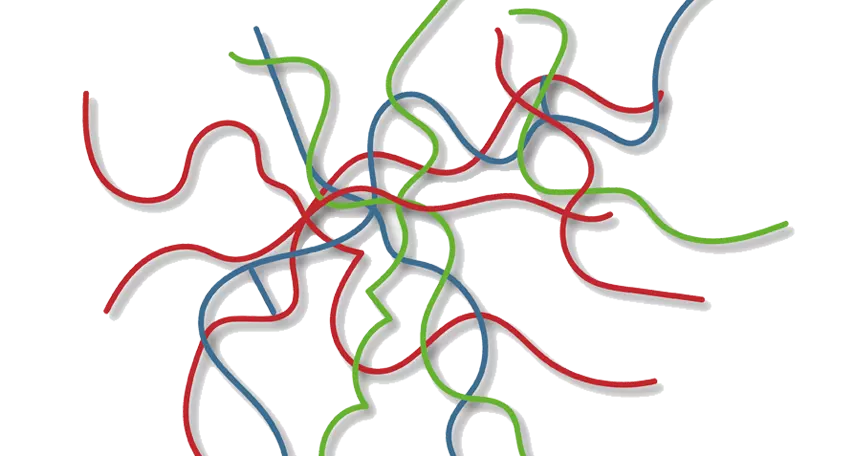
Hyaluronic acid - HA
ANOVA IRM - Germany
Contraindications
Our stem cell treatments are experimental, but we only treat patients for whom we believe the risk/benefit ratio indicates treatment based on the state of the art, i.e., medical, scientific evidence.
Please understand that we therefore do not treat patients for whom the following points apply:
- Active cancer in the last two years
- Not yet of legal age
- Existing pregnancy or lactation period
- Unable to breathe on own, ventilator
- Difficulty breathing in supine position
- Dysphagia (extreme difficulty swallowing)
- Psychiatric disorder
- Active infectious disease (Hepatitis A, B, C, HIV, Syphilis, or other)
Therapy Workflow for Rheumatoid Arthritis
The precise workflow is described in detail on the stem cell- specific pages of BMC (most often used for OA), Secretome/Exosomes and PRP (as combination therapy).
All therapies are divided into phases such as evaluation of the medical history (we analyze your current therapies and medical records), initial counseling and evaluation of potential, patient-individual benefit of a stem cell therapy (indication statement), preliminary examinations, diagnostics, consultation on all therapy options, preparation of an individual treatment plan including cost estimate, harvesting of tissue, production of the stem cell product, quality control of the product and application. There are two special features for osteoarthritis and arthritis patients. If your previous findings have not found the specific causes of your joint pain, we will examine you in advance with a precise and informative arthro-MRI or an MRI with non-radioactive contrast medium, if you wish. In addition, we often apply the stem cells (BMC) intra-articularly (i.e., directly in the joint). This means that we deliver the stem cells to the exact location where your pain originates.
Unfortunately, according to the risk-benefit ratio, we cannot treat children or pregnant women. In addition, other factors can also be exclusion criteria.
How Long Does a Stem Cell Therapy Take?
The initial analyses and counseling can be done without you having to travel to Offenbach (near Frankfurt/Main, Germany). This period can be 2 weeks up to months depending on the availability of patients slots. If you live further away, we will conduct the initial discussions by telephone or video conference. For the actual treatment, you will travel to Offenbach. Then, depending on the therapy, the tissue collection, quality control and treatment type it will take as follows:
BMC- and PRP-therapy
Each donation and application of BMC (most often used for OA) and PRP (as combination therapy) on-site period: 2 days (consecutive days).
Secretome/Exosome-therapy:
Preparation and harvest of the fat (mini-liposuction) need once 2 days (consecutive days) in Offenbach, followed by enrichment of the mesenchymal stem cells (Secretome/Exosome) and quality control. Approximately 4 weeks after the isolation, the therapy begins according to the therapy plan determined with you. You will then come to Offenbach am Main (Germany) several times for the application. The shelf life of the secretome (exosomes) is 2 years.
How Much Does Stem Cell Treatment Cost?
Our treatments are always tailored to your specific situation, disease, stage and other factors. The therapies differ in the product used (BMC, secretome, PRP or hyaluronic acid), the frequency of treatment as well as the further examinations and your sedation and anesthesia wishes. A treatment for rheumatoid arthritis can cost from a few hundred to several thousand euros. You will receive a cost estimate for all treatments in advance so that you can accurately estimate what a treatment would cost in your individual case.
Does my Health Insurance Cover the Therapy Costs?
Unfortunately, at the moment it is assumed that health insurance companies do not cover the costs of experimental therapies (BMC, secretome, PRP, micro-fracture technique), i.e. you will have to bear the costs entirely yourself.
How Does the ANOVA Therapy Differ?
Diagnostics – We Look for the Cause of Your Pain
Prof. Dr. Dr. Dr. M. K. Stehling, the founder of ANOVA IRM and the Vitus Prostate Center , is a radiologist (MD) and holds a PhD in physics. For this reason, the ANOVA Institute for Regenerative Medicine, in cooperation with the Prof. Stehling Institute for Diagnostic Imaging located in the same building, has the capability to use special precision diagnostics such as arthro-MRI and non-radioactive contrast MRIs.
Compared to many conventional MRIs, these methods are often able to localize the pain-causing inflammation in your joints. This enables us to determine individually how patients should be treated and where the stem cells should be applied.
Furthermore, in consultation with you, we supplement our patient-specific diagnostics with specific blood tests on hormones, inflammation parameters and other factors that are important in your case, or recommend further examinations such as a preventive MRI spinal scan.

Precision MRI scans - find the source of pain
ANOVA IRM © Siemens Healthcare GmbH
How Does the ANOVA Therapy Differ?
We Implant the Stem Cells Precisely Where They are Needed
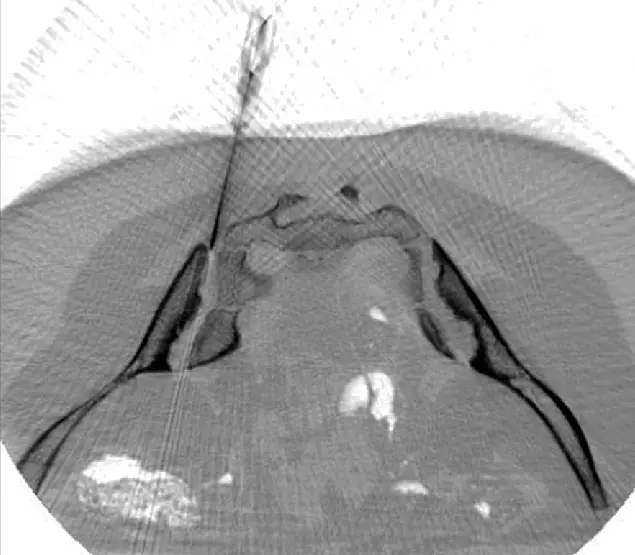
CT-assisted stem cell injection into joints
ANOVA IRM © Siemens Healthcare GmbH
Based on our specific diagnostics using arthro-MRI and non-radioactive contrast medium MRIs, we can, in contrast to many other clinics, deliver the stem cells with image support, e.g. using CT, precisely to the affected area. This means we can inject into and at joints to specifically and quickly trigger an effect where inflammation causes pain. All interventions are perfomed under supervision and care of our anesthesiologist and are pain free.
A purely intravenous administration, as many other clinics do, is only performed for the secretome (exosomes) if this is to be used additionally as a supportive or preventive measure because joint problems are present in several places in the body as the secretome is aimed to centrally modulate the immune response in order to inhibit over-reactions.
Of course, we will thoroughly advise you in the early process and the on-site consultation in advance on all steps and discuss alternatives and expectations.
Are you Interested but Uncertain?
Book a Counselling Appointment!
Our patient care managers are happy to inform you about what information we need upfront (MRI, CT, X-ray), how to transfer large data files and schedule a counseling appointment with our physicians for you. Our patient care managers are happy to inform you about what information we need upfront, how to transfer large data files and schedule a counseling appointment with our physicians for you. Please use our contact form to support a fast processing of your case and request.
You are also always welcome to send us an e-mail about your case. The counseling appointment may also take place per telephone or video chat if you live outside Germany. For more intense counseling or additional diagnostic evaluations you may also book an on-site appointment. We can perform needed MRI on the same day. All services rendered by our patient care team are free of charge and we inform you about all physician appointment charges up-front.

Avoid joint replacement with stem cell treatment
ANOVA IRM - Germany
Other Important Therapy Strategies for Rheumatoid Arthritis
Rheumatoid Arthritis is a chronic progressive diseases. Therefore, it is important to also combine any therapy with conventional approaches such as physiotherapy and exercise. We are happy to coordinate our treatments with your primary care physician or orthopedist at your location. In addition, we will be happy to advise you on nutritional supplements or infusion therapies that could support your treatment. Various substances are said to have an anti-inflammatory or regenerative supporting function.
Physiotherapy, Manual Therapy, Osteopathy, Insoles
Orthopedic treatment should always be given for osteoarthritis. Have a check to see if your legs are actually the same length or if you have hip misalignments that create a one-sided or incorrect body structure. In many cases, such as knee or hip osteoarthritis, muscles can stabilize the affected joint. Seek advice from a physical therapist. They can often show you specific stabilizing exercises that, if done regularly, can improve your range of motion. Use osteopathy or manual therapy to relieve any tightness or tension that may be present. Often such misalignments lead to further stress on joints.
Sports and Physical Activity
In many cases, moderate exercise has very positive influences on the course of osteoarthritis. Regular cycling is very promising for knee osteoarthritis. However, have your saddle height adjusted in advance at a bicycle store so that no incorrect positioning occurs. Swimming is also a very low-impact sport. You should mainly do crawl, backstroke or breaststroke with a floater. Here, one takes care to move the legs only up and down, as one would do in crawl swimming. Walking or Nordic walking can also have a very positive effect. However, in all cases, discuss your sport with your physiotherapist. In more advanced stages, water gymnastics may be the sport of choice.
Nutritional Supplementation and Nutrition
There are still few proven correlations here, but there are some promising approaches. A change in diet to a diet low in meat and rich in vegetables can help. Alcohol and nicotine should be avoided as they damage cartilage cells. Anti-inflammatory supplements are often discussed. These include omega-3 fatty acids, curcumin (turmeric), chondroitin sulfate, MSM, green-lipped mussel extract, hyaluronic acids, etc. for osteoarthritis.
You can also find more information on therapy approaches for osteoarthritis in our brochure.
Rheumatoid Arthritis - RA:
An Autoimmune Disease With no Cure Available so far
Rheumatoid Arthritis is an autoimmune disorder where the body mistakenly starts attacking its own tissues. The body begins to assume that the tissues are no longer its own, marks them as foreign objects (like bacteria or viruses), and initiates (immune) responses to completely remove them from the body. This causes a chronic inflammation, which is characteristic of RA.
It is a never-ending battle between the body and its tissues, that with time the body's conditions deteriorate. In most cases the joints are primarily affected. Usually, the fingers are the first victims in the early stages of RA. However, RA is not entirely limited to affecting the joints.
In about 40% of the cases, structures like blood vessels, nerve tissue, bone marrow, heart, lungs, skin, eyes and others can suffer permanent damage from Rheumatoid Arthritis. About 70% of RA patients are women with a distinct age range between 35-50 years.
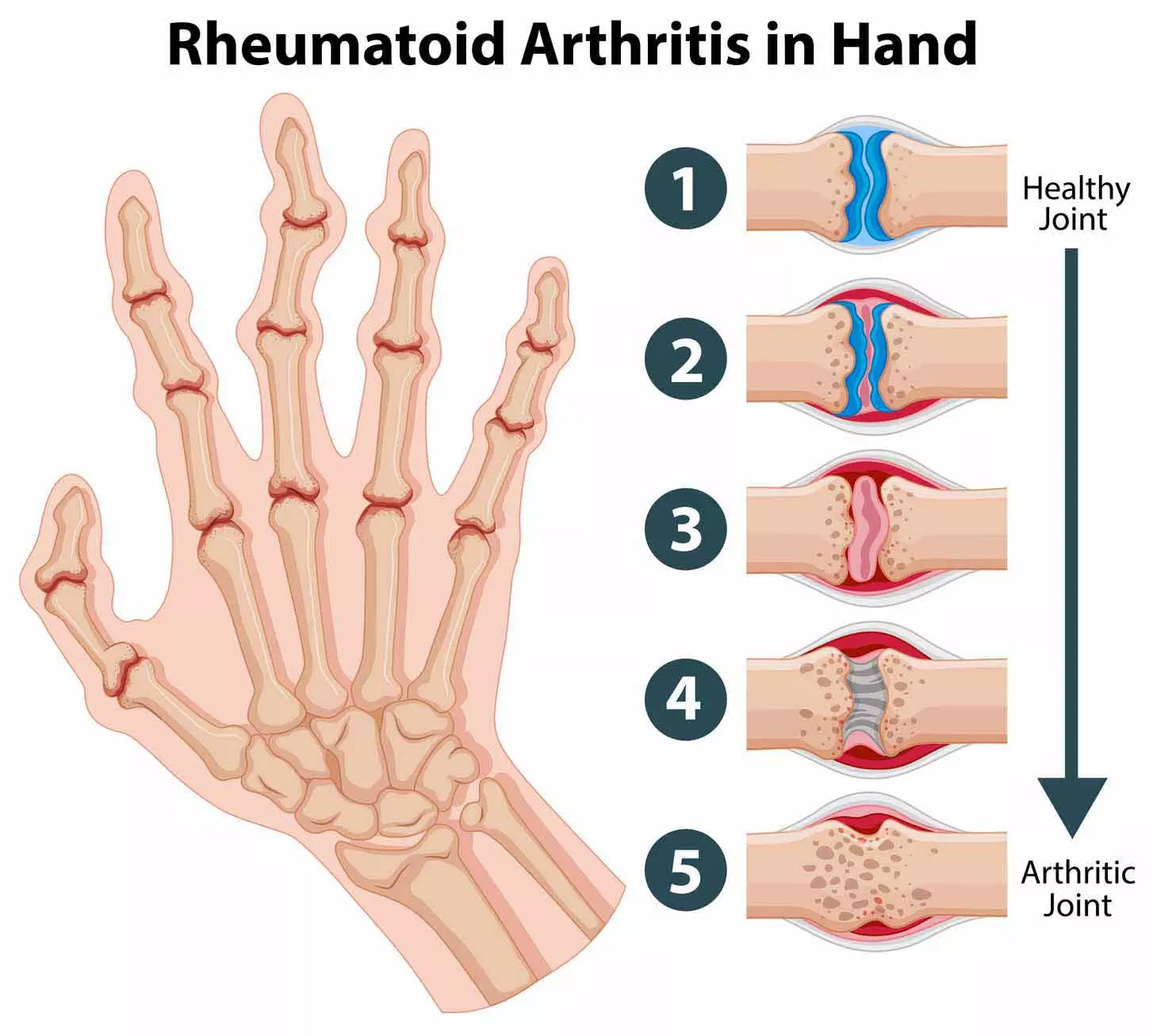
Quelle: By Jmarchn-Own work, CC BY-SA 3.0, https://commons.wikimedia.org/w/index.php?curid=9503615
Stem Cell-based Therapies for Rheumatoid Arthritis - RA
and Other Forms of Arthritis
Stem Cell-based therapies can work on several pathways: Anti-inflammatory, immunomodulation and tissue regeneration. With these benefits, stem cell-based therapies have the potential to be more than just a temporary pain relief of the standard medications.
The latest generation of biological DMARDs drugs focuses on blocking the function of aberrant immune cells. This class of drugs considerably improved the treatment options for RA. Nevertheless, these treatments are limited by incomplete treatment response and severe side effects, often leading to drug withdrawal and refectory cases. The research of Stem Cell-based treatments for Rheumatoid Arthritis, however, is focused on different aspects of RA, mainly:
- Balancing of immune responses
- Stimulation of tissue (joint) repair
- Reduction of acute inflammation
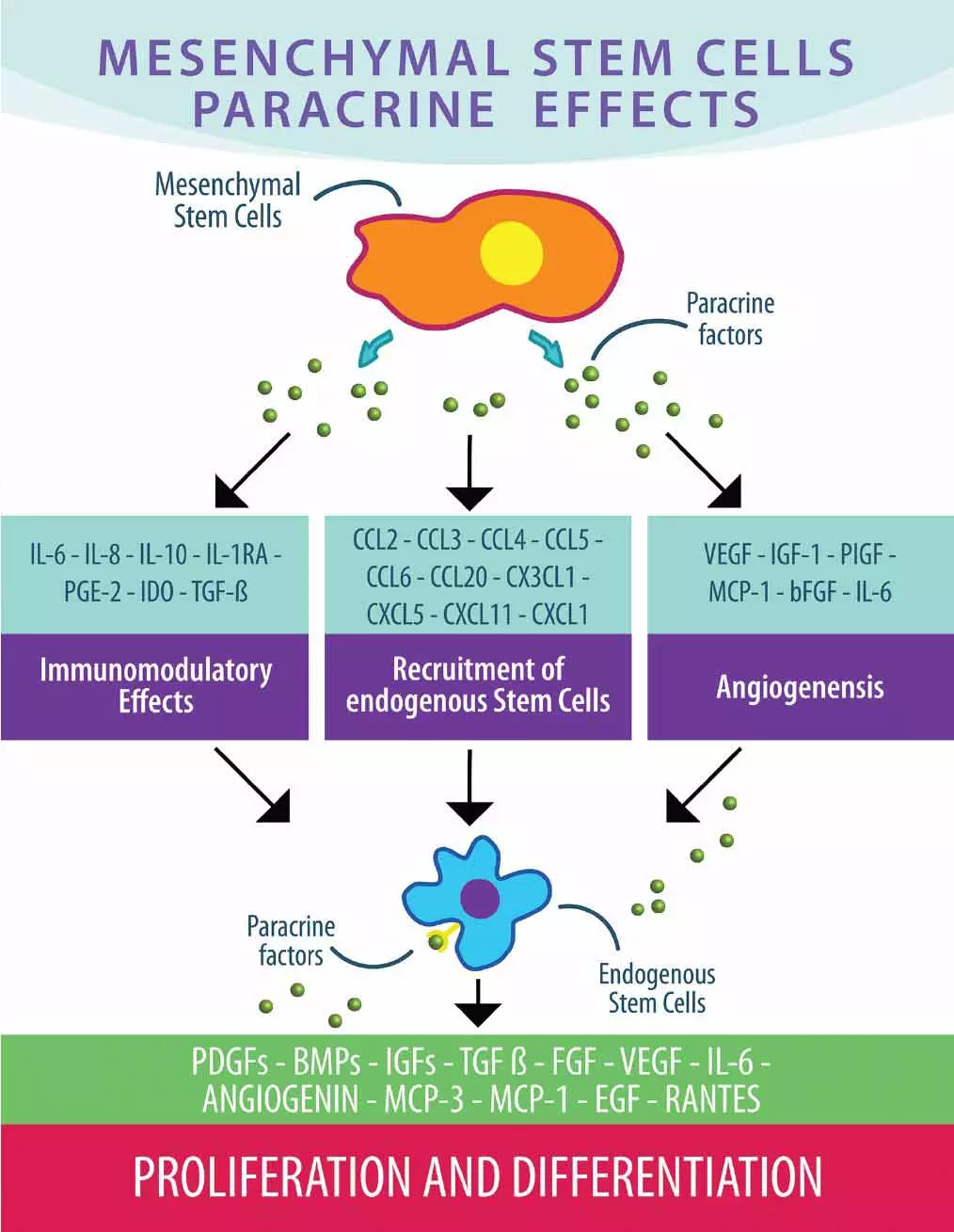
Quelle: By Jmarchn-Own work, CC BY-SA 3.0, https://commons.wikimedia.org/w/index.php?curid=95036158
Research showed that, in addition to the tissue repair and regeneration abilities of Mesenchymal Stem Cells (MSCs), they maintain anti-inflammatory and immunomodulatory powers. This wide range of natural healing effects from Mesenchymal Stem Cells (MSCs) is mainly responsible because of the soluble paracrine (messaging) factors the MSCs secrete, which are also known as the Stem Cell Secretome .
MSCs have the capacity to regulate immunity-induced peripheral tolerance which is essential for a sustained and effective treatment for RA. Several clinical trials have already been conducted with positive results. Administration of MSCs to patients with RA showed to be safe, well tolerated and induced significant remission. The serum levels of inflammatory factors were decreased as well. Other forms of arthritis which have different manifestations but somewhat similar mechanisms, appear to be treatable with stem cell-based therapies as well. These forms include but are not limited to:
- Psoriatic Arthritis
- Juvenile Idiopathic Arthritis
- Vacuities
- Gout
We at ANOVA can harness the essence of stem cells (the paracrine "messaging" factors from Mesenchymal Stem Cells) and deliver it to your body with the ANOVA Stem Cell Secretome. The ANOVA Stem Cell Secretome is a cell-free, repeatable and easily accessible form of stem cell therapy. Our secretome has a high concentration of paracrine factors, which can initiate regenerative processes in your body.
Most importantly, all our stem cell-based therapies, especially our Stem Cell Secretome therapy, do not interfere with your current medication. All the processes that the Stem Cell Secretome employs are completely natural to your body, since the stem cells come from your body.
Treating Rheumatoid Arthritis With Next Generation Stem Cell-based Therapies and our Services at ANOVA
Stem cell therapy is an experimental therapy and therefore, it is important that your attending physician analyzes the benefits and the risks for your individual case. If the benefits outweigh the risks, your doctor can suggest stem cell therapy as an option to you.
We focus on offering our patients personalized treatments; but not by means of excluding already proven and effective therapies, but by combining them with novel treatments from the field of regenerative medicine. Our holistic approach considers all combinations of available treatments to provide you with an optimized treatment for your specific condition. Just as importantly, a diagnostic work up with state-of-the-art technology combined with evidence-based effective therapies make our treatments so special. With our location being in the heart of Europe, our German clinic has the optimal location for patients from all around the world. Make an appointment with our medical specialists today.
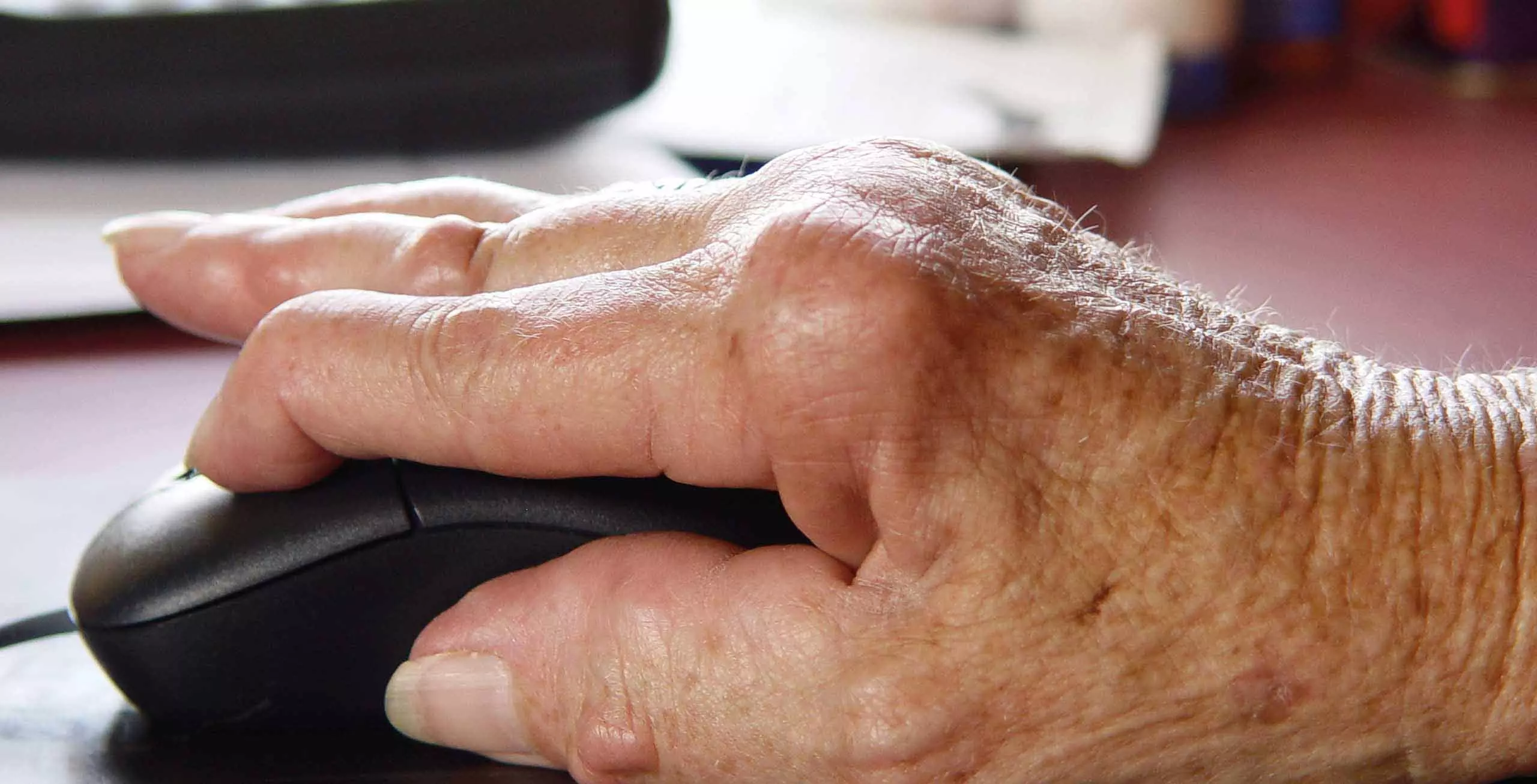
Quelle: By Jmarchn-Own work, CC BY-SA 3.0, https://commons.wikimedia.org/w/index.php?curid=95036158
Frequently Asked Questions
What are the Symptoms of Rheumatoid Arthritis?
Usually the symptoms of Rheumatoid Arthritis include but are not limited to:
- Swollen and warm joints
- Fever and weight loss
- Fatigue
- Tender Joints
- Stiffness
that are usually much worse in the mornings or after prolonged inactivity.
Early Rheumatoid Arthritis usually starts with the joints of the fingers or toes. As the disease progresses, symptoms often spread to the ankles, elbows, wrists, knees, hips or shoulders. In about 40% of the cases other structures like: blood vessels, nerve tissue, bone marrow, heart, lungs, skin, eyes and others can suffer permanent damage from Rheumatoid Arthritis (RA) effects. The symptoms of RA may vary in severity, and may even come and go (known as flare-ups and remission periods). Over time, RA can cause joints to deform.
What are the Causes of Rheumatoid Arthritis?
The causes of RA are not fully understood. It is known that an abnormal response of the immune system plays a major role in the inflammation and joint degeneration.
There is evidence that genes, hormones and environmental factors are involved. As such RA ranks among the multifactorial autoimmune chronic inflammatory diseases.
A specific genetic marker, HLA (Human Leukocyte Antigen) - a gene that controls immune responses, was shown to be responsible for a five-fold prevalence in causing Rheumatoid Arthritis. However, this gene alone is not the only cause for the development of the disease. Other genes connected to RA such as STAT4, C5, TRAF1 and PTPN22 are also influencing the prevalence or the progression of RA.
Additionally, bacteria or viruses are under investigation, as they may trigger the disease outbreak in people with genetic predisposition.
Female hormones appear to be an important factor, as 70% of all RA patients are women.
Moreover, obesity, physical or emotional trauma can trigger the disease as well. There have been additional reports about air pollution, cigarette smoke and insecticides to be correlated to RA.
What are the Risk factors of Rheumatoid Arthritis?
- Age: 80% of the RA patients are between 35 and 50.
- Sex: 70% of RA patients are women.
- Family History: As described above, genes play a role. Hence, if a direct relative has RA, you may have an increased risk of the disease.
- Environment: Exposure to asbestos or silica may increase the risk for developing Rheumatoid Arthritis.
- Smoking: Associated both with higher risk for developing RA symptoms (if the Genes are present) as well as a worse disease progress.
- Obesity: Appears to increase the risk for RA.
What Other Treatments are Available for Rheumatoid Arthritis?
NSAIDs: Nonsteroidal anti-inflammatory drugs (NSAIDs) reduce inflammation and pain. Side effects may include but are not limited to stomach irritation, heart problems, and liver and kidney damage.
Steroids: Corticosteroid medications temporarily but highly effective reduce inflammation and pain and slow joint damage. The treatment cannot be repeated indefinitely due to side effects like the thinning of bones. Other Side effects may include weight gain and diabetes.
DMARDs: Disease-Modifying Antirheumatic Drugs. They treat the symptoms and change the progression of RA.
Most common DMARDs are: Methotrexate, Leflunomide, Hydroxychloroquine and Sulfasalazine.
Sadly, they come with a wide range of side effects, such as: Immunosuppression, Bone Marrow suppression, liver damage, and severe lung infections which often lead to death.
A newer generation of DMARDs are known as biological and immunological DMARDs. They include: Abatacept, Adalimumab, Anakinra, Certolizumab, Etanercept, Golimumab, Infliximab, Rituximab, Tocilizumab and Tofacitinib. They target immune system pathways, and very frequently cause problems to the immune system, as they partly block the natural way of how the immune system works. Usually these immunological DMARDs are paired with Methotrexate.
Physical and Occupational Therapy for Rheumatoid Arthritis are an important part for any Rheumatoid Arthritis treatment. They are aimed to maintain muscle mass and keep joints flexible for as long as possible.
Surgery for Rheumatoid Arthritis is required when medications or Stem Cell-based therapies fail to bring relief. There are different surgical methods with different aims. They are never meant to cure the disease, as they are only able to relief pain, bring back some flexibility or are used for cosmetic purposes. Tendon repair, Joint fusion, total joint replacement and Synovectomy are the most usual surgeries performed for Rheumatoid Arthritis.
Alternative medicine for Rheumatoid Arthritis, and the most commonly recommended methods are:
- Tai Chi: Gentle movement exercise to reduce stress, increase flexibility of joints and muscle. It has been found to reduce pain for many RA patients.
- Omega 3 Fish Oil (either fresh or as supplements): Fish oils have been found to reduce both pain and stiffness from RA.
- Plant Oil: Black currant, Borage and Evening Primrose contain a fatty acid which also reduces pain and stiffness from RA, similar to how fish oils work.
For more information about possible treatments, please see the following links below:
Arthritis Research UK - Treatments
National Health Service (NHS) - Treatments
What are Natural Remedies for "flare-ups" of Rheumatoid Arthritis?
- Enough sleep: About 8 hours of sleep is recommended for RA patients.
- Enough exercise: Exercise is very important for RA patients for a variety of biological reasons. Gentle stretching, Tai Chi, walking, swimming and water aerobics are good low-impact choices.
- Creams, gels and lotions: Topical creams can ease the pain and increase blood flow. Typical active ingredients are capsaicin, salicylates, camphor and menthol.
- Fish Oil supplements: Studies have shown that fish oil supplements can reduce pain. Take care however, as their intake can interfere with some medications.
- Aspirin and NSAIDs: The common medications, but not without side effects. See us or your local RA specialist for prescriptions.
- Assistive devices: Customized shoes, canes and crutches are common tools to assist with the daily life of RA patients.
- Plant oil: Though not scientifically proven, some plant oil containing a fatty acid called gamma-linoleic acid may be effective to reduce pain and morning stiffness.
- Heat and cold: Use this common method to numb the pain and increase blood flow.
What is Methotrexate?
Methotrexate is a Disease-Modifying Antirheumatic Drug (DMARD). It acts as an immune-suppressor. This means that it controls the immune system, that is affected by RA, to reduce pain and inflammation. This drug was shown to help with preventing permanent joint damage and disability.
What is Psoriatic Arthritis?
Psoriatic Arthritis is also a chronic disease that is characterized by a form of inflammation of the skin (psoriasis) and joints (inflammatory arthritis). Psoriatic Arthritis can cause painful inflammations around joints just as RA, and it is often associated with a scaly skin condition (psoriasis). Sometimes the arthritis develops before the psoriasis, therefore proper diagnostics are vital.
Both RA and Psoriatic Arthritis appear to be treatable with Stem Cell-based treatments. A diagnostic examination with state-of-the-art technology and careful planning is important before starting treatments with Stem Cell-based methods.
We recommend you contact us to receive a full diagnostic work-up and suggested treatment plan.
Read More
References and Literature - Stem Cell-based Therapies for Rheumatoid Arthritis
- Tyndall A, van Laar JM. Stem cells in the treatment of inflammatory arthritis. Best Pract Res Clin Rheumatol 2010;24:565–574.
- Liang J, Li X, Zhang H, Wang D, Feng X, Wang H, et al. Allogeneic mesenchymal stem cells transplantation in patients with refractory RA. Clin Rheumatol 2012;31:157–161.
- Wang L, Wang L, Cong X, Liu G, Zhou J, Bai B, et al. Human umbilical cord mesenchymal stem cell therapy for patients with active rheumatoid arthritis: safety and efficacy. Stem Cells Dev 2013;22:3192–3202.
Further References for MSC, BMC, Stemcell Secretome and EVs
- Georg Hansmann, Philippe Chouvarine, Franziska Diekmann, Martin Giera, Markus Ralser, Michael Mülleder, Constantin von Kaisenberg, Harald Bertram, Ekaterina Legchenko & Ralf Hass "Human umbilical cord mesenchymal stem cell-derived treatment of severe pulmonary arterial hypertension". Nature Cardiovascular Research volume 1, pages568–576 (2022).
- Murphy JM, Fink DJ, Hunziker EB, et al. Stem cell therapy in a caprine model of osteoarthritis . Arthritis Rheum. 2003;48:3464–74.
- Lee KB, Hui JH, Song IC, Ardany L, et al. Injectable mesenchymal stem cell therapy for large cartilage defects—a porcine model. Stem Cell. 2007;25:2964–71.
- Saw KY, Hussin P, Loke SC, et al. Articular cartilage regeneration with autologous marrow aspirate and hyaluronic acid: an experimental study in a goat model. Arthroscopy . 2009;25(12):1391–400.
- Black L, Gaynor J, Adams C, et al. Effect of intra-articular injection of autologous adipose-derived mesenchymal stem and regenerative cells on clinical signs of chronic osteoarthritis of the elbow joint in dogs. Vet Ther. 2008;9:192-200.
- Centeno C, Busse D, Kisiday J, et al. Increased knee cartilage volume in degenerative joint disease using percutaneously implanted, autologous mesenchymal stem cells. Pain Physician. 2008;11(3):343–53.
- Centeno C, Kisiday J, Freeman M, et al. Partial regeneration of the human hip via autologous bone marrow nucleated cell transfer: a case study. Pain Physician. 2006;9:253–6.
- Centeno C, Schultz J, Cheever M. Safety and complications reporting on the re-implantation of culture-expanded mesenchymal stem cells using autologous platelet lysate technique. Curr Stem Cell. 2011;5(1):81–93.
- Pak J. Regeneration of human bones in hip osteonecrosis and human cartilage in knee osteoarthritis with autologous adipose derived stem cells: a case series. J Med Case Rep. 2001;5:296.
- Kuroda R, Ishida K, et al. Treatment of a full-thickness articular cartilage defect in the femoral condyle of an athlete with autologous bone-marrow stromal cells. Osteoarthritis Cartilage. 2007;15:226–31.
- Emadedin M, Aghdami N, Taghiyar L, et al. Intra-articular injection of autologous mesenchymal stem cells in six patients with knee osteoarthritis. Arch Iran Med. 2012;15(7):422–8.
- Saw KY et al. Articular cartilage regeneration with autologous peripheral blood stem cells versus hyaluronic acid: a randomized controlled trial. Arthroscopy. 2013;29(4):684–94.
- Vangsness CT, Farr J, Boyd J, et al. Adult human mesenchymal stem cells delivered via intra-articular injection to the knee following partial medial meniscectomy. J Bone Joint Surg. 2014;96(2):90–8.
- Freitag, Julien, et al. Mesenchymal stem cell therapy in the treatment of osteoarthritis: reparative pathways, safety and efficacy–a review. BMC musculoskeletal disorders 17.1 (2016): 230.
- Maumus, Marie, Christian Jorgensen, and Danièle Noël. " Mesenchymal stem cells in regenerative medicine applied to rheumatic diseases: role of secretome and exosomes. " Biochimie 95.12 (2013): 2229-2234.
- Dostert, Gabriel, et al. " How do mesenchymal stem cells influence or are influenced by microenvironment through extracellular vesicles communication?. " Frontiers in Cell and Developmental Biology 5 (2017).
- Chaparro, Orlando, and Itali Linero. " Regenerative Medicine: A New Paradigm in Bone Regeneration. " (2016).
- Toh, Wei Seong, et al. " MSC exosome as a cell-free MSC therapy for cartilage regeneration: Implications for osteoarthritis treatment. " Seminars in Cell & Developmental Biology. Academic Press, 2016.
- Chaparro, Orlando, and Itali Linero. " Regenerative Medicine: A New Paradigm in Bone Regeneration. " (2016).
- S. Koelling, J. Kruegel, M. Irmer, J.R. Path, B. Sadowski, X. Miro, et al., Migratory chondrogenic progenitor cells from repair tissue during the later stages of human osteoarthritis , Cell Stem Cell 4 (2009) 324–335.
- B.A. Jones, M. Pei, Synovium-Derived stem cells: a tissue-Specific stem cell for cartilage engineering and regeneration , Tissue Eng. B: Rev. 18 (2012) 301–311.
- W. Ando, J.J. Kutcher, R. Krawetz, A. Sen, N. Nakamura, C.B. Frank, et al., Clonal analysis of synovial fluid stem cells to characterize and identify stable mesenchymal stromal cell/mesenchymal progenitor cell phenotypes in a porcine model: a cell source with enhanced commitment to the chondrogenic lineage, Cytotherapy 16 (2014) 776–788.
- K.B.L. Lee, J.H.P. Hui, I.C. Song, L. Ardany, E.H. Lee, Injectable mesenchymal stem cell therapy for large cartilage defects—a porcine model, Stem Cells 25 (2007) 2964–2971.
- W.-L. Fu, C.-Y. Zhou, J.-K. Yu, A new source of mesenchymal stem cells for articular cartilage repair: mSCs derived from mobilized peripheral blood share similar biological characteristics in vitro and chondrogenesis in vivo as MSCs from bone marrow in a rabbit model , Am. J. Sports Med. 42 (2014) 592–601.
- X. Xie, Y. Wang, C. Zhao, S. Guo, S. Liu, W. Jia, et al., Comparative evaluation of MSCs from bone marrow and adipose tissue seeded in PRP-derived scaffold for cartilage regeneration , Biomaterials 33 (2012) 7008–7018.
- E.-R. Chiang, H.-L. Ma, J.-P. Wang, C.-L. Liu, T.-H. Chen, S.-C. Hung, Allogeneic mesenchymal stem cells in combination with hyaluronic acid for the treatment of osteoarthritis in rabbits , PLoS One 11 (2016) e0149835.
- H. Nejadnik, J.H. Hui, E.P. Feng Choong, B.-C. Tai, E.H. Lee, Autologous bone marrow–derived mesenchymal stem cells versus autologous chondrocyte implantation: an observational cohort study , Am. J. Sports Med. 38 (2010) 1110–1116.
- I. Sekiya, T. Muneta, M. Horie, H. Koga, Arthroscopic transplantation of synovial stem cells improves clinical outcomes in knees with cartilage defects , Clin. Orthop. Rel. Res. 473 (2015) 2316–2326.
- Y.S. Kim, Y.J. Choi, Y.G. Koh, Mesenchymal stem cell implantation in knee osteoarthritis: an assessment of the factors influencing clinical outcomes , Am. J. Sports Med. 43 (2015) 2293–2301.
- W.-L. Fu, Y.-F. Ao, X.-Y. Ke, Z.-Z. Zheng, X. Gong, D. Jiang, et al., Repair of large full-thickness cartilage defect by activating endogenous peripheral blood stem cells and autologous periosteum flap transplantation combined with patellofemoral realignment , Knee 21 (2014) 609–612.
- Y.-G. Koh, O.-R. Kwon, Y.-S. Kim, Y.-J. Choi, D.-H. Tak, Adipose-derived mesenchymal stem cells with microfracture versus microfracture alone: 2-year follow-up of a prospective randomized trial , Arthrosc. J. Arthrosc. Relat. Surg. 32 (2016) 97–109.
- T.S. de Windt, L.A. Vonk, I.C.M. Slaper-Cortenbach, M.P.H. van den Broek, R. Nizak, M.H.P. van Rijen, et al., Allogeneic mesenchymal stem cells stimulate cartilage regeneration and are safe for single-Stage cartilage repair in humans upon mixture with recycled autologous chondrons , Stem Cells (2016) (n/a-n/a).
- L. da Silva Meirelles, A.M. Fontes, D.T. Covas, A.I. Caplan, Mechanisms involved in the therapeutic properties of mesenchymal stem cells , Cytokine Growth Factor Rev. 20 (2009) 419–427.
- W.S. Toh, C.B. Foldager, M. Pei, J.H.P. Hui, Advances in mesenchymal stem cell-based strategies for cartilage repair and regeneration , Stem Cell Rev. Rep. 10 (2014) 686–696.
- R.C. Lai, F. Arslan, M.M. Lee, N.S.K. Sze, A. Choo, T.S. Chen, et al., Exosome secreted by MSC reduces myocardial ischemia/reperfusion injury , Stem Cell Res. 4 (2010) 214–222.
- S. Zhang, W.C. Chu, R.C. Lai, S.K. Lim, J.H.P. Hui, W.S. Toh, Exosomes derived from human embryonic mesenchymal stem cells promote osteochondral regeneration, Osteoarthr . Cartil. 24 (2016) 2135–2140.
- S. Zhang, W. Chu, R. Lai, J. Hui, E. Lee, S. Lim, et al., 21 – human mesenchymal stem cell-derived exosomes promote orderly cartilage regeneration in an immunocompetent rat osteochondral defect model , Cytotherapy 18 (2016) S13.
- C.T. Lim, X. Ren, M.H. Afizah, S. Tarigan-Panjaitan, Z. Yang, Y. Wu, et al., Repair of osteochondral defects with rehydrated freeze-dried oligo[poly(ethylene glycol) fumarate] hydrogels seeded with bone marrow mesenchymal stem cells in a porcine model
- A. Gobbi, G. Karnatzikos, S.R. Sankineani, One-step surgery with multipotent stem cells for the treatment of large full-thickness chondral defects of the knee , Am. J. Sports Med. 42 (2014) 648–657.
- A. Gobbi, C. Scotti, G. Karnatzikos, A. Mudhigere, M. Castro, G.M. Peretti, One-step surgery with multipotent stem cells and Hyaluronan-based scaffold for the treatment of full-thickness chondral defects of the knee in patients older than 45 years , Knee Surg. Sports Traumatol. Arthrosc. (2016) 1–8.
- A. Gobbi, G. Karnatzikos, C. Scotti, V. Mahajan, L. Mazzucco, B. Grigolo, One-step cartilage repair with bone marrow aspirate concentrated cells and collagen matrix in full-thickness knee cartilage lesions: results at 2-Year follow-up , Cartilage 2 (2011) 286–299.
- K.L. Wong, K.B.L. Lee, B.C. Tai, P. Law, E.H. Lee, J.H.P. Hui, Injectable cultured bone marrow-derived mesenchymal stem cells in varus knees with cartilage defects undergoing high tibial osteotomy: a prospective, randomized controlled clinical trial with 2 years’ follow-up , Arthrosc. J. Arthrosc. Relat. Surg. 29 (2013) 2020–2028.
- J.M. Hare, J.E. Fishman, G. Gerstenblith, et al., Comparison of allogeneic vs autologous bone marrow–derived mesenchymal stem cells delivered by transendocardial injection in patients with ischemic cardiomyopathy: the poseidon randomized trial, JAMA 308 (2012) 2369–2379.
- L. Wu, J.C.H. Leijten, N. Georgi, J.N. Post, C.A. van Blitterswijk, M. Karperien, Trophic effects of mesenchymal stem cells increase chondrocyte proliferation and matrix formation , Tissue Eng. A 17 (2011) 1425–1436.
- L. Wu, H.-J. Prins, M.N. Helder, C.A. van Blitterswijk, M. Karperien, Trophic effects of mesenchymal stem cells in chondrocyte Co-Cultures are independent of culture conditions and cell sources , Tissue Eng. A 18 (2012) 1542–1551.
- S.K. Sze, D.P.V. de Kleijn, R.C. Lai, E. Khia Way Tan, H. Zhao, K.S. Yeo, et al., Elucidating the secretion proteome of human embryonic stem cell-derived mesenchymal stem cells , Mol. Cell. Proteomics 6 (2007) 1680–1689.
- M.B. Murphy, K. Moncivais, A.I. Caplan, Mesenchymal stem cells: environmentally responsive therapeutics for regenerative medicine , Exp. Mol. Med. 45 (2013) e54.
- M.J. Lee, J. Kim, M.Y. Kim, Y.-S. Bae, S.H. Ryu, T.G. Lee, et al., Proteomic analysis of tumor necrosis factor--induced secretome of human adipose tissue-derived mesenchymal stem cells , J. Proteome Res. 9 (2010) 1754–1762.
- S. Bruno, C. Grange, M.C. Deregibus, R.A. Calogero, S. Saviozzi, F. Collino, et al., Mesenchymal stem cell-derived microvesicles protect against acute tubular injury, J. Am. Soc. Nephrol. 20 (2009) 1053–1067.
- M. Yá˜nez-Mó, P.R.-M. Siljander, Z. Andreu, A.B. Zavec, F.E. Borràs, E.I. Buzas, et al. Biological properties of extracellular vesicles and their physiological functions (2015).
- C. Lawson, J.M. Vicencio, D.M. Yellon, S.M. Davidson, Microvesicles and exosomes: new players in metabolic and cardiovascular disease , J. Endocrinol. 228 (2016) R57–R71.
- A.G. Thompson, E. Gray, S.M. Heman-Ackah, I. Mager, K. Talbot, S.E. Andaloussi, et al., Extracellular vesicles in neurodegenerative diseas—pathogenesis to biomarkers, Nat. Rev. Neurol. 12 (2016) 346–357.
- I.E.M. Bank, L. Timmers, C.M. Gijsberts, Y.-N. Zhang, A. Mosterd, J.-W. Wang, et al., The diagnostic and prognostic potential of plasma extracellular vesicles for cardiovascular disease , Expert Rev. Mol. Diagn. 15 (2015) 1577–1588.
- T. Kato, S. Miyaki, H. Ishitobi, Y. Nakamura, T. Nakasa, M.K. Lotz, et al., Exosomes from IL-1 stimulated synovial fibroblasts induce osteoarthritic changes in articular chondrocytes , Arthritis. Res. Ther. 16 (2014) 1–11.
- R.W.Y. Yeo, S.K. Lim, Exosomes and their therapeutic applications, in: C. Gunther, A. Hauser, R. Huss (Eds.), Advances in Pharmaceutical Cell TherapyPrinciples of Cell-Based Biopharmaceuticals, World Scientific, Singapore, 2015, pp. 477–491.
- X. Qi, J. Zhang, H. Yuan, Z. Xu, Q. Li, X. Niu, et al., Exosomes secreted by human-Induced pluripotent stem cell-derived mesenchymal stem cells repair critical-sized bone defects through enhanced angiogenesis and osteogenesis in osteoporotic rats , Int. J. Biol. Sci. 12 (2016) 836–849.
- R.C. Lai, F. Arslan, S.S. Tan, B. Tan, A. Choo, M.M. Lee, et al., Derivation and characterization of human fetal MSCs: an alternative cell source for large-scale production of cardioprotective microparticles , J. Mol. Cell. Cardiol. 48 (2010) 1215–1224.
- Y. Zhou, H. Xu, W. Xu, B. Wang, H. Wu, Y. Tao, et al., Exosomes released by human umbilical cord mesenchymal stem cells protect against cisplatin-induced renal oxidative stress and apoptosis in vivo and in vitro , Stem Cell Res. Ther. 4 (2013) 1–13.
- Y. Qin, L. Wang, Z. Gao, G. Chen, C. Zhang, Bone marrow stromal/stem cell-derived extracellular vesicles regulate osteoblast activity and differentiation in vitro and promote bone regeneration in vivo , Sci. Rep. 6 (2016) 21961.
- M. Nakano, K. Nagaishi, N. Konari, Y. Saito, T. Chikenji, Y. Mizue, et al., Bone marrow-derived mesenchymal stem cells improve diabetes-induced cognitive impairment by exosome transfer into damaged neurons and astrocytes , Sci. Rep. 6 (2016) 24805.
- K. Nagaishi, Y. Mizue, T. Chikenji, M. Otani, M. Nakano, N. Konari, et al., Mesenchymal stem cell therapy ameliorates diabetic nephropathy via the paracrine effect of renal trophic factors including exosomes , Sci. Rep. 6 (2016) 34842.
- S.R. Baglio, K. Rooijers, D. Koppers-Lalic, F.J. Verweij, M. Pérez Lanzón, N. Zini, et al., Human bone marrow- and adipose-mesenchymal stem cells secrete exosomes enriched in distinctive miRNA and tRNA species , Stem Cell Res. Ther. 6 (2015) 1–20.
- T. Chen, R. Yeo, F. Arslan, Y. Yin, S. Tan, Efficiency of exosome production correlates inversely with the developmental maturity of MSC donor, J. Stem Cell Res. Ther. 3 (2013) 2.
- R.C. Lai, S.S. Tan, B.J. Teh, S.K. Sze, F. Arslan, D.P. de Kleijn, et al., Proteolytic potential of the MSC exosome proteome: implications for an exosome-mediated delivery of therapeutic proteasome , Int. J. Proteomics 2012 (2012) 971907.
- T.S. Chen, R.C. Lai, M.M. Lee, A.B.H. Choo, C.N. Lee, S.K. Lim, Mesenchymal stem cell secretes microparticles enriched in pre-microRNAs , Nucleic Acids Res. 38 (2010) 215–224.
- R.W. Yeo, R.C. Lai, K.H. Tan, S.K. Lim, Exosome: a novel and safer therapeutic refinement of mesenchymal stem cell, J. Circ. Biomark. 1 (2013) 7.
- R.C. Lai, R.W. Yeo, S.K. Lim, Mesenchymal stem cell exosomes, Semin. Cell Dev. Biol. 40 (2015) 82–88.
- B. Zhang, R.W. Yeo, K.H. Tan, S.K. Lim, Focus on extracellular vesicles: therapeutic potential of stem cell-derived extracellular vesicles , Int. J. Mol. Sci. 17 (2016) 174.
- Hu G-w, Q. Li, X. Niu, B. Hu, J. Liu, Zhou S-m, et al., Exosomes secreted by human-induced pluripotent stem cell-derived mesenchymal stem cells attenuate limb ischemia by promoting angiogenesis in mice , Stem Cell Res. Ther. 6 (2015) 1–15.
- J. Zhang, J. Guan, X. Niu, G. Hu, S. Guo, Q. Li, et al., Exosomes released from human induced pluripotent stem cells-derived MSCs facilitate cutaneous wound healing by promoting collagen synthesis and angiogenesis , J. Transl. Med. 13 (2015) 1–14.
- B. Zhang, M. Wang, A. Gong, X. Zhang, X. Wu, Y. Zhu, et al., HucMSC-exosome mediated-Wnt4 signaling is required for cutaneous wound healing, Stem Cells 33 (2015) 2158–2168.
- B. Zhang, Y. Yin, R.C. Lai, S.S. Tan, A.B.H. Choo, S.K. Lim, Mesenchymal stem cells secrete immunologically active exosomes , Stem Cells Dev. 23 (2013) 1233–1244.
- C.Y. Tan, R.C. Lai, W. Wong, Y.Y. Dan, S.-K. Lim, H.K. Ho, Mesenchymal stem cell-derived exosomes promote hepatic regeneration in drug-induced liver injury models , Stem Cell Res. Ther. 5 (2014) 1–14.
- C. Lee, S.A. Mitsialis, M. Aslam, S.H. Vitali, E. Vergadi, G. Konstantinou, et al., Exosomes mediate the cytoprotective action of mesenchymal stromal cells on hypoxia-induced pulmonary hypertension , Circulation 126 (2012) 2601–2611.
- B. Yu, H. Shao, C. Su, Y. Jiang, X. Chen, L. Bai, et al., Exosomes derived from MSCs ameliorate retinal laser injury partially by inhibition of MCP-1 , Sci. Rep. 6 (2016) 34562.
- Jo CH, Lee YG, Shin WH, et al. Intra-articular injection of mesenchymal stem cells for the treatment of osteoarthritis of the knee: a proof of concept clinical trial. Stem Cells. 2014;32(5):1254–66.
- Vega, Aurelio, et al. Treatment of knee osteoarthritis with allogeneic bone marrow mesenchymal stem cells: a randomized controlled trial. Transplantation. 2015;99(8):1681–90.
- Davatchi F, Sadeghi-Abdollahi B, Mohyeddin M, et al. Mesenchymal stem cell therapy for knee osteoarthritis. Preliminary report of four patients. Int J Rheum Dis. 2011;14(2):211–5
- Hernigou P, Flouzat Lachaniette CH, Delambre J, et al. Biologic augmentation of rotator cuff repair with mesenchymal stem cells during arthroscopy improves healing and prevents further tears: a case- controlled study. Int Orthop. 2014;38(9):1811–1818
- Galli D, Vitale M, Vaccarezza M. Bone marrow-derived mesenchymal cell differentiation toward myogenic lineages: facts and perspectives. Biomed Res Int. 2014;2014:6.
- Beitzel K, Solovyova O, Cote MP, et al. The future role of mesenchymal Stem cells in The management of shoulder disorders . Arthroscopy. 2013;29(10):1702–1711.
- Isaac C, Gharaibeh B, Witt M, Wright VJ, Huard J. Biologic approaches to enhance rotator cuff healing after injury. J Shoulder Elbow Surg. 2012;21(2):181–190.
- Malda, Jos, et al. " Extracellular vesicles [mdash] new tool for joint repair and regeneration. " Nature Reviews Rheumatology (2016).
Further References about PRP
- Rubio-Azpeitia E, Andia I. Partnership between platelet-rich plasma and mesenchymal stem cells: in vitro experience. Muscles Ligaments Tendons J. 2014;4(1):52–62.
Extras
- Xu, Ming, et al. " Transplanted senescent cells induce an osteoarthritis-like condition in mice. " The Journals of Gerontology Series A: Biological Sciences and Medical Sciences (2016): glw154.
- McCulloch, Kendal, Gary J. Litherland, and Taranjit Singh Rai. " Cellular senescence in osteoarthritis pathology ." Aging Cell (2017).
Patient Services at ANOVA Institute for Regenerative Medicine
- Located in the center of Germany, quick access by car or train from anywhere in Europe
- Simple access worldwide, less than 20 minutes from Frankfurt Airport
- Individualized therapy with state-of-the-art stem cell products
- Individually planned diagnostic work-up which include world-class MRI and CT scans
- German high quality standard on safety and quality assurance
- Personal service with friendly, dedicated Patient Care Managers
- Scientific collaborations with academic institutions to assure you the latest regenerative medical programs

